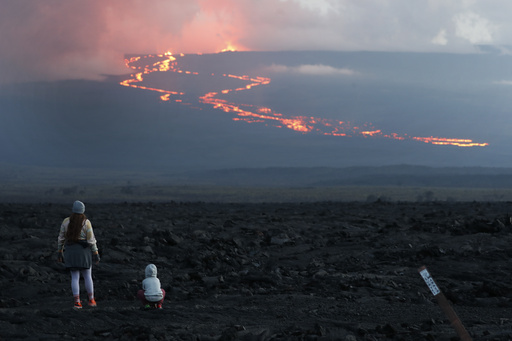
WASHINGTON — Although scientists cannot predict the exact timing of a volcanic eruption, they are able to notice certain indicators that suggest activity may be imminent.
Such was the case two years ago with Mauna Loa, the largest active volcano on the planet. Approximately two months prior to its dramatic eruption, which released torrents of bright orange lava, geologists recorded an uptick in minor earthquakes in the vicinity and other warning signs. They promptly alerted residents on Hawaii’s Big Island about potential hazards.
Recent research on Mauna Loa’s lava has corroborated the timeline indicating when the molten rock was in motion beneath the surface. “Studying volcanoes is complex since we cannot directly observe what occurs inside them; we have to rely on indirect indicators,” explained Erik Klemetti Gonzalez, a volcano specialist based at Denison University who was not part of this particular research endeavor.
The upsurge of ground elevation and intensified seismic activity in the region were attributed to magma shifting from deeper layers of the Earth’s crust to supply volcanic chambers beneath Mauna Loa, noted Kendra Lynn, a research geologist at the Hawaiian Volcano Observatory and co-author of the study published in Nature Communications. As the pressure reached a critical level, the magma ascended through fragile surface rocks, resulting in the lava flow that commenced in late November 2022.
Following the eruption, scientists analyzed samples of the volcanic material. Their findings revealed that specific crystals within the lava indicated that around 70 days prior to the eruption, substantial amounts of molten rock transitioned from approximately 1.9 miles (3 kilometers) below the surface to within a mile (2 kilometers) or less underneath the summit. This data aligned closely with the observations made by geologists previously.
The previous eruption of Mauna Loa occurred in 1984. It is noteworthy that a significant number of the volcanoes regarded as active in the United States are located in Hawaii, Alaska, and along the West Coast. Globally, about 585 volcanoes are classified as active.
While scientists may not be able to forecast eruptions with certainty, they can create a form of “forecast,” as explained by Ben Andrews, who leads the global volcano program at the Smithsonian Institution and was not involved in the study. He likens volcanic forecasts to weather predictions—essentially informed estimates regarding the likelihood of volcanic activity.
Experts believe that by analyzing historical volcanic behavior, researchers can enhance their ability to predict future eruptions. “By identifying similar patterns in the data, we can anticipate a higher likelihood of eruption conditions developing,” said Klemetti Gonzalez.

